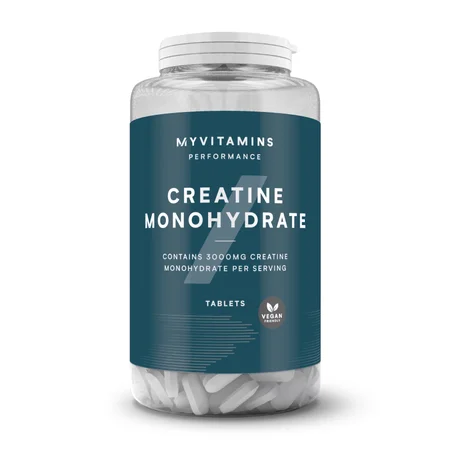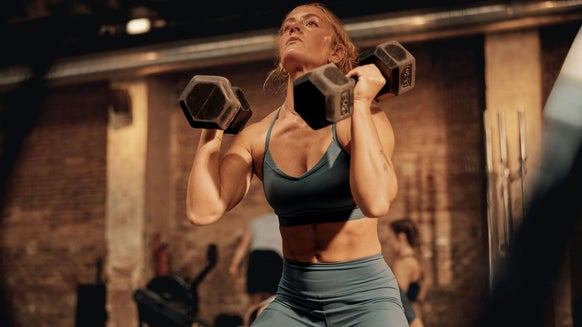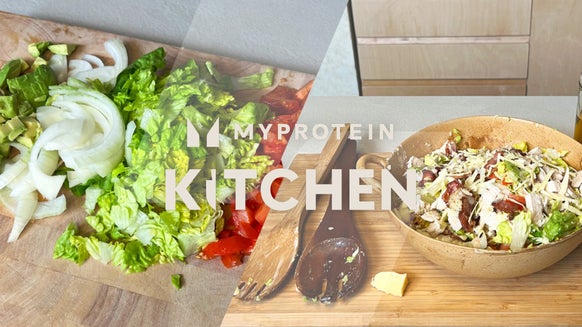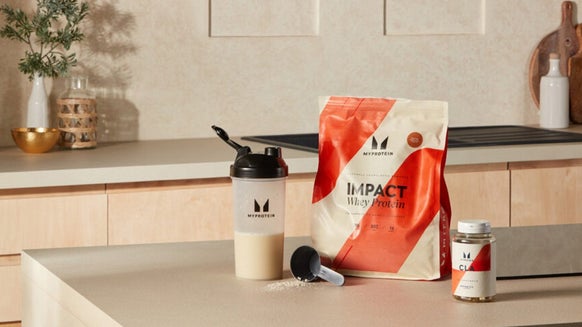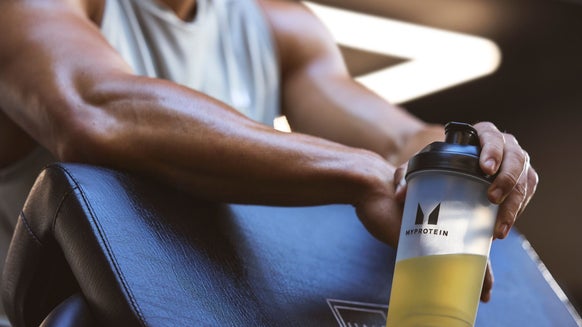Top Dumbbell Shoulder Exercises | Shoulder Workouts For Mass
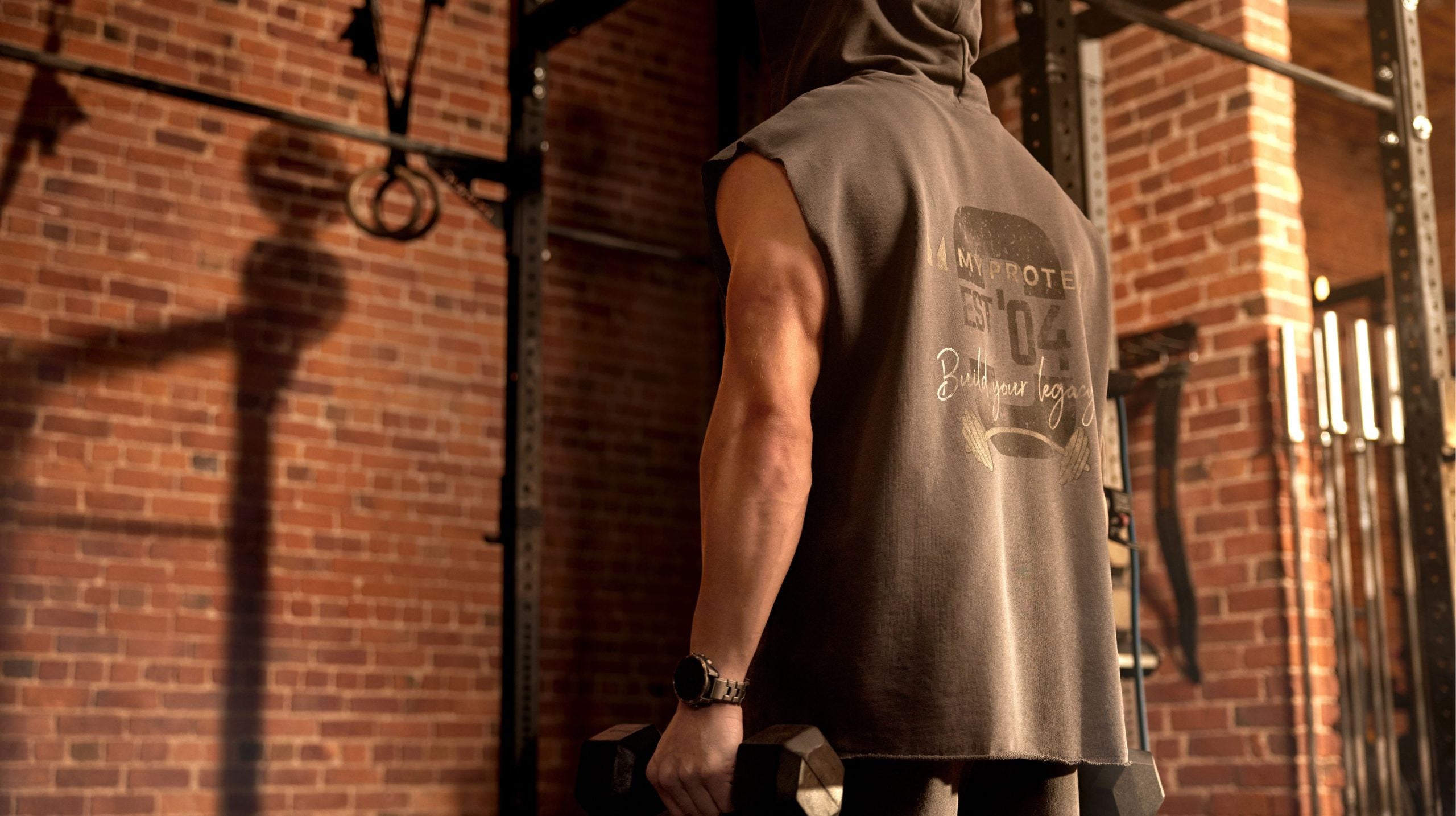

If you’re trying to build a muscular physique, developing your shoulders is likely to be one of your priorities.
One of the best ways to put on some serious shoulder mass and get full, dense shoulders is by doing dumbbell shoulder exercises.
Here are some of the best shoulder workouts with dumbbells to add mass to your shoulders, and how to implement them into your training routine.
- The shoulder muscles
- 9 best dumbbell shoulder exercises to build mass
- Shoulder workout plan for building mass
The shoulder muscles
Deltoids (delts) is the muscle we’re most often talking about when we talk about training shoulder muscles. The shoulder joint is extremely mobile when compared to others on the body — like the knee or elbow — and is what is known as a ball-and-socket joint. This allows the shoulders to move in any direction — upwards, backwards, sideways — and your arms to rotate inward and outwards.
The external shoulder muscles consist of three main parts: the anterior deltoid head (front shoulder), lateral deltoid head (side shoulder), and posterior deltoid head (rear shoulder).
9 best dumbbell shoulder exercises to build mass
Dumbbells are among the most easily available free weights, so exercises using them are ideal for beginners and can be easily included in home workouts.
Here are nine dumbbell exercises we’ve chosen to target a range of muscles in your shoulders.
1. Dumbbell shoulder press
The dumbbell shoulder press is one of the best exercises for building shoulder mass and strength. It uses multiple muscles at once, which allows you to lift a large amount of weight. It primarily targets the anterior delts as well as the triceps.
The dumbbell shoulder press can be done either seated or standing. The seated version is better for building shoulder mass as it isolates the shoulders and removes any support from the legs and lower back. The most common rep range for muscle growth is between eight and 12 reps.
A common mistake some people make during a dumbbell shoulder press is using weights that are too heavy. The shoulder is a mobile joint, so it’s not a good idea to try and do very heavy low reps. This is because the shoulder joint needs to work harder to stabilise the arm and there is a higher risk of injury.
How to do the dumbbell shoulder press
- Pick a suitable weight for your required number of reps. Raise each weight up and let the dumbbells sit on the shoulders (or just above) with your palms facing forwards.
- Push the weight up above the head and touch the dumbbells together above the head. Then, lower the weight back down until the dumbbells sit back on the shoulder.
- Make sure you do full reps — all the way up and back down. The greater the range of motion, the more muscle fibres you will use, leading to greater muscle growth in the shoulders.
- Repeat the steps for your chosen number of reps and sets. Try to keep the weight the same throughout your workout.
2. Dumbbell front raise
The dumbbell front raise is an excellent exercise for building shoulder mass. It’s an isolation exercise that primarily targets the front head of the shoulder. With isolation exercises, you might need to use lighter weights as more load is placed on a specific part of the body.
As a lighter weight is used, a higher number of reps can be used — anything from 10 to 20 reps. One thing to avoid is swinging or momentum. Each rep must be controlled, and you must engage the shoulder muscles to do the work.
How to do the dumbbell front raise
- Stand tall while holding a set of dumbbells against your thighs with your palms facing inwards.
- Raise one dumbbell in front of you at a time, so that the dumbbell comes just above your shoulder line. Your arm should be almost straight but the elbow soft, palms facing towards the floor. The opposite arm should be resting against your thigh.
- Hold at the top for a second and lower back down slowly. Then raise the opposite arm and repeat the sequence.
- Aim for 10 to 15 reps per arm.
3. Dumbbell side lateral raise
The dumbbell side lateral raise works the side of the shoulders, also known as the lateral head. This muscle is one that contributes most to appearance of shoulder size. The best way to develop this muscle is through shoulder abduction — moving the arm away from the body.
This exercise can work well with a medium to light weight for higher reps. It’s a challenging exercise to do with heavy weights, so focus on growing the muscles rather than maxing out on a heavy load.
This shoulder exercise can be done seated or standing. The benefit of doing it seated is that it reduces need for support from the lower back, meaning the shoulders are forced to work harder.
How to do the dumbbell side lateral raise
- Grab a dumbbell in each hand and sit on a bench with your palms facing inwards, next to your thighs.
- Lift your arms up to the side so that your knuckles are in line with your shoulders and your weights are parallel with the floor. Hold this position at the top for a second and slowly lower the weight back down to the starting position.
- Try to focus work on your shoulder heads, as otherwise it’s easy for the trap muscles to take some of the strain.
- For the standing variation of the exercise, stand in the same position as you would for front raises but with your hands at your side.
- Aim for 2 to 3 sets of 12 to 15 reps.
4. Dumbbell bent-over raise
The dumbbell bent-over raise exercise targets the posterior delts, located at the back of the shoulder. For many people, this muscle will be undeveloped compared to the other parts of the shoulder.
But if you want defined shoulders with large muscle mass, then don’t neglect the posterior delts.
This exercise can be done seated or standing. Like front and side raises, the dumbbell bent-over raise can be done with a lower weight and more reps. It’s not uncommon for this muscle to be underdeveloped, so don’t be surprised if you can’t use much weight if you’re just starting out.
How to do the dumbbell bent-over raise
- For the standing variation, keep your spine straight and bend over so your torso is nearly parallel to the floor. Your head should be in a neutral position and you should avoid extending your neck upwards.
- Your arms should be down in front of you, dumbbells in hand, and palms facing each other. The elbows should not be locked but relaxed with a very slight bend.
- Engage your rear delts and pull your elbows up toward the ceiling in a reverse fly motion. The weights should end up close to parallel with the floor with your palms facing the floor.
- Keep your torso still and your core engaged throughout the movement.
- Aim for 2 to 3 sets of 12 to 15 reps.
5. Dumbbell upright row
The dumbbell upright row can be used to target your shoulders or traps, depending on how wide or narrow you keep your elbows during the movement. The closer you keep your hands together, the more the exercise works your traps. The wider you keep them, the more it works the side delts.
This exercise is also compound one so heavier weights can be used.
How to do the dumbbell upright row
- Grab a set up dumbbells and stand up straight with the weights resting on the front of your thighs with your palms facing downwards.
- Engage your shoulders (the muscles on the side) and lift the hands and elbows upwards, keeping the palms facing the floor.
- At the top of the movement, when the muscles are fully contracted, the weights in your hands should be in line with your shoulders and facing forwards. There should almost be a 90-degree bend from the elbow to the shoulder.
- Hold this position for a second and return slowly to the starting position.
- To work the traps more, keep the weights closer together inside the thighs.
- Aim for 3 sets of 8 to 12 reps.
6. Dumbbell shoulder shrugs
If you want to develop your neck and traps, then look no further than dumbbell shrugs. Dumbbell shrugs are relatively simple to perform, but form and technique are essential.
One common mistake made during this exercise is selecting a weight that’s too heavy. Another common mistake is neglecting one of the most important aspects of training — full range of motion.
Dumbbell shrugs can be trained in an extensive rep range — anywhere from 6 to 15 reps.
How to do the dumbbell shrug
- Pick up a dumbbell in each hand and hold the weights outside the hips, by the side of your thighs.
- Your arms should be fully extended with your elbows relaxed and not locked out. Lift the dumbbells as high as you can with your traps by shrugging your shoulders up towards your ears. Hold for a second before lowering them back down to the starting position.
- Avoid pushing your head forwards. This is a common mistake, but it shortens the movement and makes it less effective.
- Engage your core and repeat.
- Aim for 2 to 3 sets of 8 to 12 reps.
7. One arm dumbbell swing
This exercise is similar to kettlebell swings but uses a single dumbbell. The additional benefit here is the extra calories this will burn by increasing your heart rate.
How to do the dumbbell swing
- Hold a dumbbell at arm's length between your legs.
- Sink into a squat and swing the dumbbell through your legs before immediately driving yourself forward, bringing the dumbbell up towards your head as you straighten your legs.
- Repeat this movement, then swap sides.
8. Spellcaster
A movement that will target several areas. Not only will it ramp the heart rate up, but it will improve your shoulder mobility with the rotational movement as well as the fact it will increase strength and size.
This is one that will definitely bring the burn.
How to do the spellcaster
- Hold a dumbbell in either hand.
- Stand with your legs wide, knees slightly bent.
- Swing both dumbbells to one side and lift them up as though drawing a circle from hip level to above shoulder height.
- Swing the weights to the other side, dipping down to your hip before raising them again. Keep repeating this motion.
9. See Saw Press
The double kettlebell see saw press allows you to work with heavier kettlebells overhead since they won't both be above your head at the same time. The exercise incorporates your entire upper body and helps to build structural integrity.
How to do the see saw press
- Hold two dumbbells just behind your shoulders, palms facing forwards.
- Look up and tilt your body to the left, extending your right arm straight above you.
- Lower the dumbbell and repeat on the other side to create a see-saw motion.
- One rep is equivalent to both arms performing the move.
Shoulder workout plan for building mass
This workout contains multiple dumbbell shoulder exercises that are designed to target all the muscles in your shoulder and increase overall muscle mass.
| Exercise | Sets and reps |
| Dumbbell shoulder press | 3 sets x 10-12 reps |
| Dumbbell side lateral raise | 3 sets x 12-15 reps |
| Bent over rear delt raises | 3 sets x 15 reps |
| Wide grip dumbbell upright row | 2 sets x 12-15 reps |
| Dumbbell shrug | 2 sets x 12-15 reps |
Take home message
Dumbbells can be some of the most useful pieces of equipment for growing well-developed shoulders. They can be used in shoulder workouts to hit all angles and muscles of the shoulder group.
Dumbbells can be used to perform compound and isolation exercises and, best of all, they’re ideal for home and gym workouts.
READ MORE HERE:
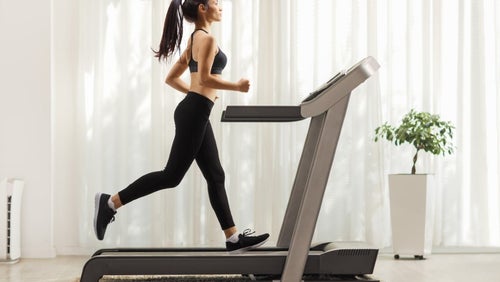
Treadmill Workouts: PT Reviews 12-3-30 & 10-2-20
The workout the internet can't stop talking about.
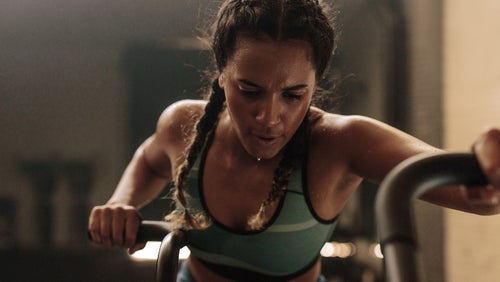
10 Best Chest Exercises for Women
Sculpt your upper body with these simple moves.
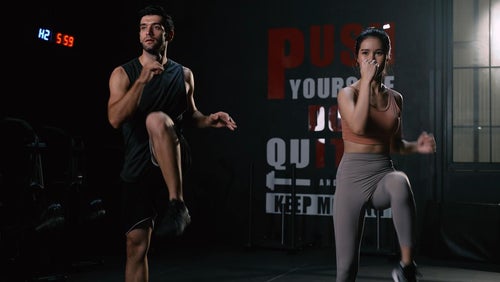
20 Minute HIIT Workout At Home | No Equipment Workout
This upper body HIIT workout is ideal for keeping you on track even if you can’t get to the gym.

